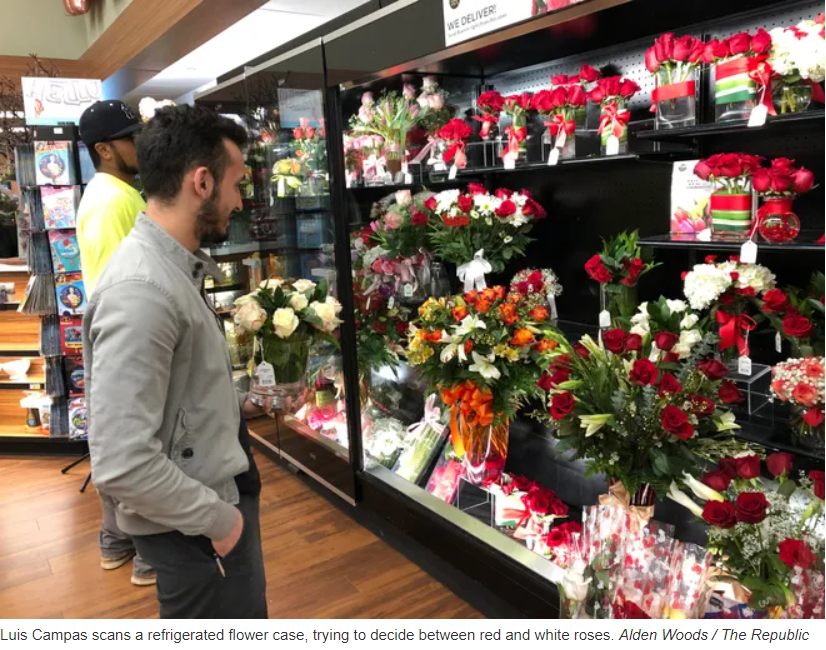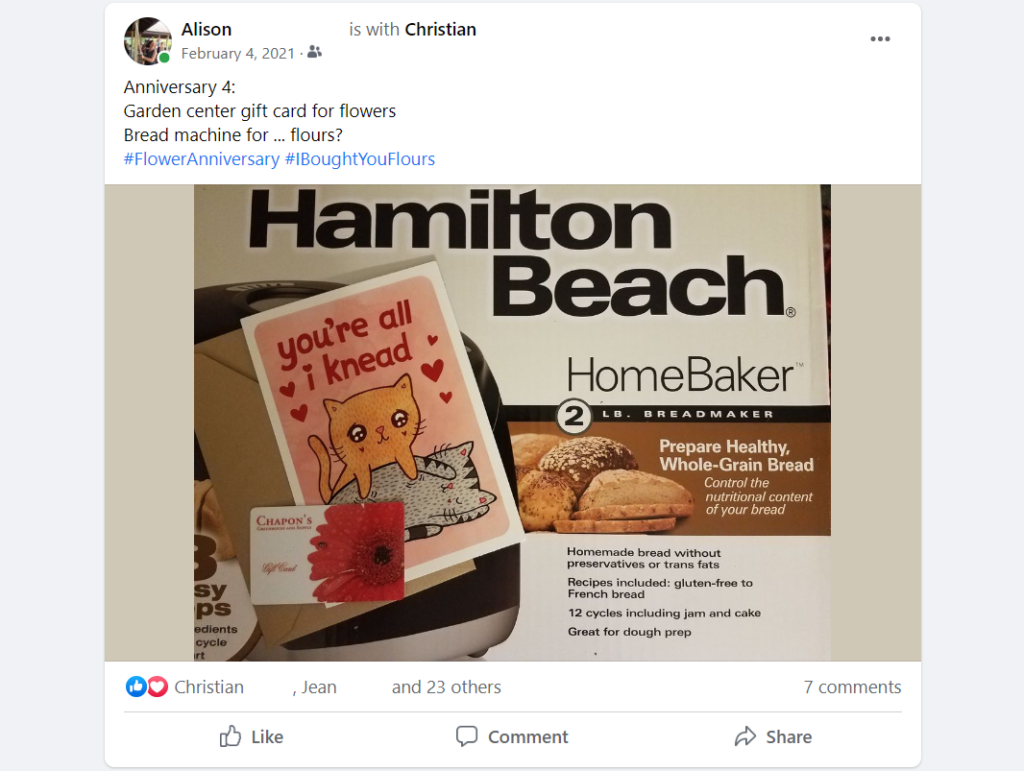Welcome to the 210th post on this blog, or, more simply, Radical Moderate’s Fourth Anniversary post! I continue to be surprised that it has been so long since friends encouraged me to put my thoughts and research on a variety of sustainability topics into some kind of medium more permanent and consolidated than my occasional passionate-but-informed Facebook rants, but here we are. I love learning and teaching, and I’m sure I would still be doing it in some manner if I didn’t set aside time every week to write a post about recycling, or energy, or gardening, or cooking, or travel, or mental health… but I do love having all of these thoughts and facts together in one place, so I’m glad I’m here.
And I also love that you’re here reading them! So whether you’ve just stumbled across this blog, or if you’ve been reading since the beginning, I am grateful to have you here to mark this milestone. If you’ve been with me over the last few years, you won’t be surprised by what’s coming next: for four years, we’re going to take a look at the traditional anniversary gift of flowers – also appropriate with Valentine’s Day right around the corner.
Mommy, Where do Flowers Come From?
Growing up with a garden center in the family, we rarely had cut flowers in the house, usually opting for live plants as presents or decorations. I accordingly gave cut flowers very little thought, aside from seeing them in the floral display case at our grocery store. In fact, if we had cut flowers in the house, more often than not, they came directly from our own yard. It wasn’t until an anthropology study abroad trip in college that I even thought about the global supply chain of cut flowers and what implications our purchasing decisions in the US had on other countries around the world – and the world itself.

My junior-year trip to Ecuador included a visit to a flower plantation, which was enlightening and depressing in equal measure. We learned that this massive (and growing) industry was looking more to low-latitude, high-altitude countries for production for several reasons. First, being near the equator means consistently long daylight hours, without significant shifts in growing seasons. Second, being in the mountains means cooler climate with less need for irrigation to offset the heat of lower elevations. Third, unsurprisingly, is the benefit of cheap labor.
Certainly, all of those reasons are valid from a profit standpoint, and we are seeing that play out as Ecuador, Colombia, Kenya, and Ethiopia now rank among the top flower-exporting countries in the world, along with the Netherlands, which has historically been central to the global flower trade.[2] In case you were wondering who is buying all of these flowers, the vast majority go to the European Union and the United States in such staggering quantities that cut flowers represent a $30B industry, with continued growth projected to $48B by 2030.[3]
The Cost of Beauty
I have covered agricultural carbon footprint on this blog before, most notably in my Community Supported Agriculture series,[4] but also more recently when I calculated a portion of the equivalent emissions tied to the delicious truffle that Christian bought me for Christmas.[5] While food and flowers are not equivalent products, there can be many similarities, particularly when discussing the very key factors of seasonality and shelf life.

One big “villain” I try to avoid at all costs is air transport. Whether it’s berries or flowers, products that expire quickly very often need to be taken from farm to market with all due haste, necessitating travel by air and in refrigerated containers, both of which contribute to a heavy emissions footprint. The global supply chain for flowers is so efficient that transportation from farm to shop can be as quick as 24-48 hours, often covering thousands of miles in the process. However, miles traveled is not the only issue – growing products out of season has a huge cost as well, requiring extra energy to create a suitable greenhouse climate that has the right temperature and light for the plants in question.
In the research I did for my CSA series, I found that buying groceries in-season (even from farther away) can often do more to reduce your carbon footprint than buying locally. And that argument was supported by an oft-cited Life Cycle Analysis out of Cranfield University that compared theoretical roses landing in British stores: those grown in and transported from the Netherlands would have a carbon footprint six times greater than those grown in and transported from Kenya. Despite the massive footprint of air transport, off-season growing practices still made a greater impact in this instance.[6]
Making the “Right” Choice
Of course, supply chain logistics and agricultural practices that contribute to carbon footprint are extremely complex, even before you start talking about the ethical implications of our decisions, but the picture does look pretty grim. On the plantation in Ecuador, I was horrified to see truckloads of beautiful, discarded roses being shredded into mulch because they did not meet the standards of perfection required for sale. Waste means carbon footprint. I’m also aware that in order to create the perfect blossom over and over again, massive amounts of fertilizers, pesticides, and preservatives may be used, all of which increase carbon footprint. Transportation, no matter how long or short the journey by road or air, calls for refrigeration, which again increases each flower’s carbon footprint.[7]

Carbon footprint aside (and that’s saying a lot), I could easily proclaim that no one should be buying cut flowers because they contribute to the exploitation of workers around the globe through low wages and poor working conditions. But I am also aware that the flower industry is an important part of economic development in countries like Kenya, and while it is not always done in a responsible way, it can be. Some Fairtrade producers are taking steps to better support their workers with higher wages and development opportunities. Fairtrade flowers represent a small segment of the British market, where, for example, they make up about 2% of sales, but that number is expected to grow (not just in Britain, but worldwide) as more consumers purchase more responsibly.[9]
And while I am glad that Fairtrade flowers are an increasingly available option, I am still much more likely to decorate my own house with potted plants. When the weather permits, some of those potted plants may even make their way into my garden… from which, conversely, most cut flowers in my home will come in their proper season. As always, I am a proponent of shopping locally and supporting small nurseries and florists, rather than big box stores, but you can go a step further and buy living plants or dried bouquets, both of which reduce demand for off-season flower production. In fact, I was quite pleased to see dried bouquets and wreaths as options from our local CSA subscription. (Yes, I joined another one – but that’s a blog post for another time.)
~
Once again, thank you for being here. I am always grateful to hear thoughts, questions, and stories from the people who stop by, so let me know about your own floral adventures below!
And happy anniversary!
[2] https://www.bbc.com/future/bespoke/made-on-earth/the-new-roots-of-the-flower-trade/
[3] https://www.astuteanalytica.com/industry-report/cut-flowers-market
[4] https://radicalmoderate.online/community-supported-agriculture-part-1/
[5] https://radicalmoderate.online/truffle-hog/
[7] https://www.greenjournal.co.uk/2019/08/the-environmental-impacts-of-the-cut-flower-industry/
[8] https://www.eatharvie.com/about/
[9] https://www.bbc.com/future/bespoke/made-on-earth/the-new-roots-of-the-flower-trade/
0 Comments